

Warbirds Downunder 2018 was held over two days, in the New South Wales town of Temora, approximately an hour North of Wagga Wagga. An afternoon/evening airshow on Friday October 12th got things rolling before the full airshow on the Saturday.
Compared to the last event much milder temperatures and much less wind made this event a lot more bearable for the average airshow enthusiast. And as can be expected a large and diverse range of aircraft were on show as well. Just some of the flying aircraft included, Spitfire Mk XVI, Spitfire Mk VIII, Cessna A-37B Dragonfly, Lockheed Hudson, CA-13 Boomerang, DH-82A Tiger Moth, Ryan STM, Ryan PT-22, CAC Wirraway, Gloster F.8 Meteor, Cessna O-2A, Hawker Hurricane, various P-51 Mustangs, P-40 Kittyhawks, Cessna O-1 Birddogs, CAC Winjeels, CT-4s, T-28 Trojans, The Southern Knights Aerobatic Team, Harvards, Russian Roolettes, PBY Catalina, DHC-4A Caribou, Yaks, Nanchangs, Grumman TBM Avenger, The RAAF Roulettes PC-9A Demonstration Team, RAAF Hawk 127s, RAAF F/A-18A Classic Hornet, RAAF C-17A Globemaster, RAAF C-130J Hercules and RAAF E-7A Wedgetail.
So lets get to the important part, the photos.
Friday’s show brought some fantastic sunshine and spirited displays.
Opening the show was the Royal Australia Air Force’s aerobatic display team The Roulettes, which currently operate the Pilatus PC-9A. The PC-9A is in the process of being withdrawn and replaced by the newer Pilatus PC-21 which the RAAF has on order, and is currently in transition to enter front line service by early next year, so any future displays by the team with the PC-9A, will be numbered. Warbirds Downunder was the last appearance of the PC-9A at this airshow. Aircraft serials at the event were A23-046, 063, 027, 050, 025, 052 and 012. Six are flown in the display, with a seventh used as a back up.


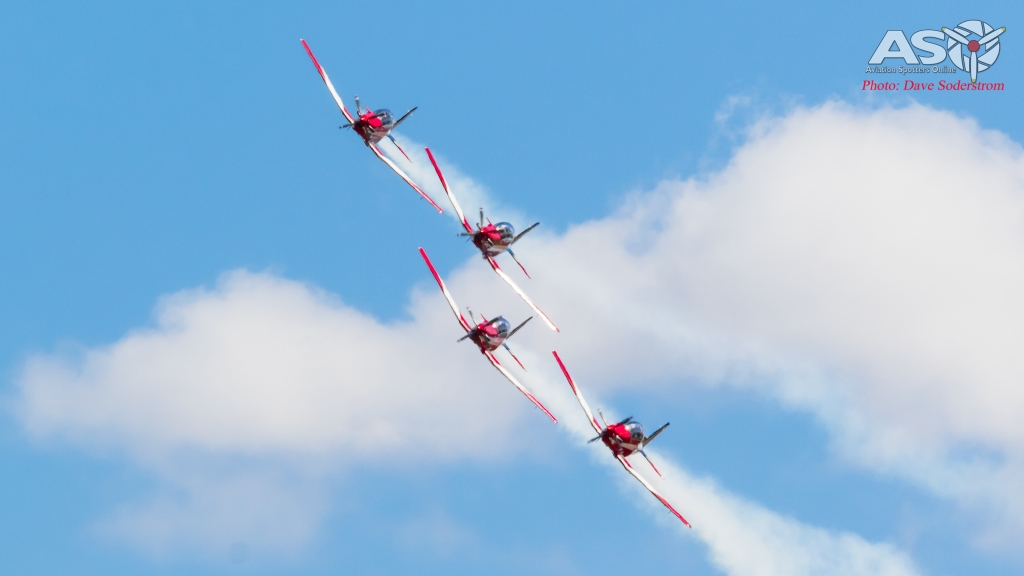


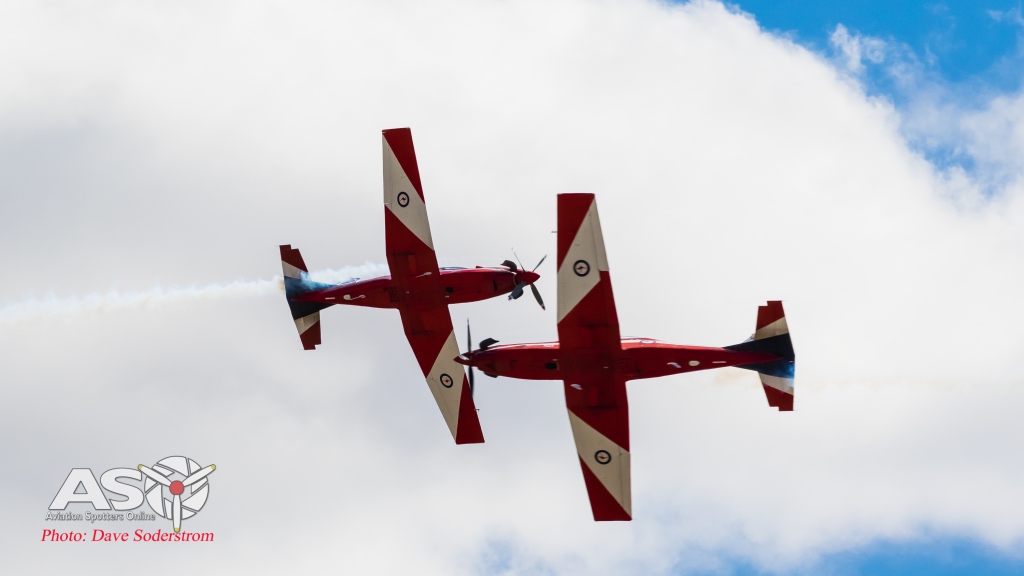
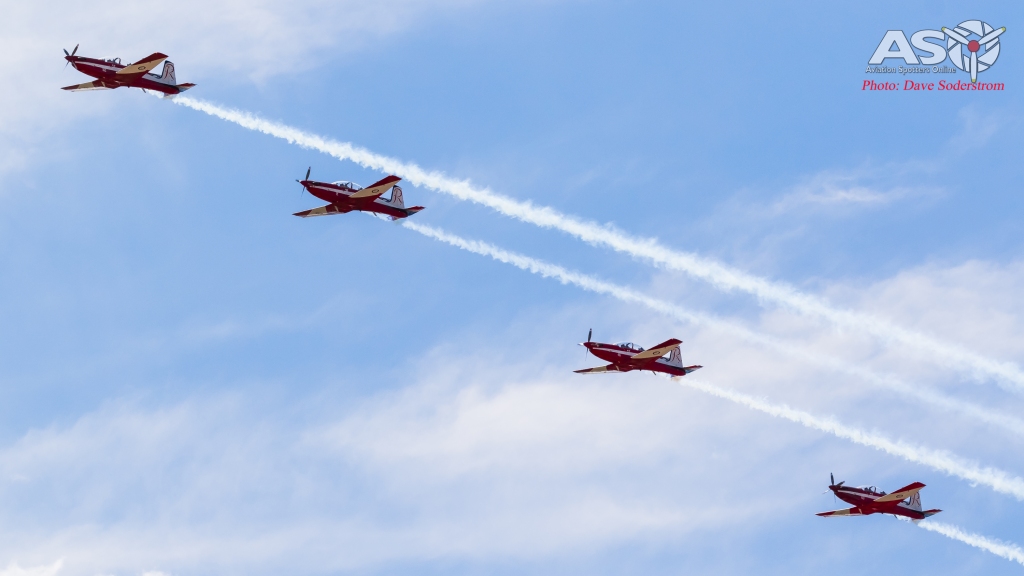


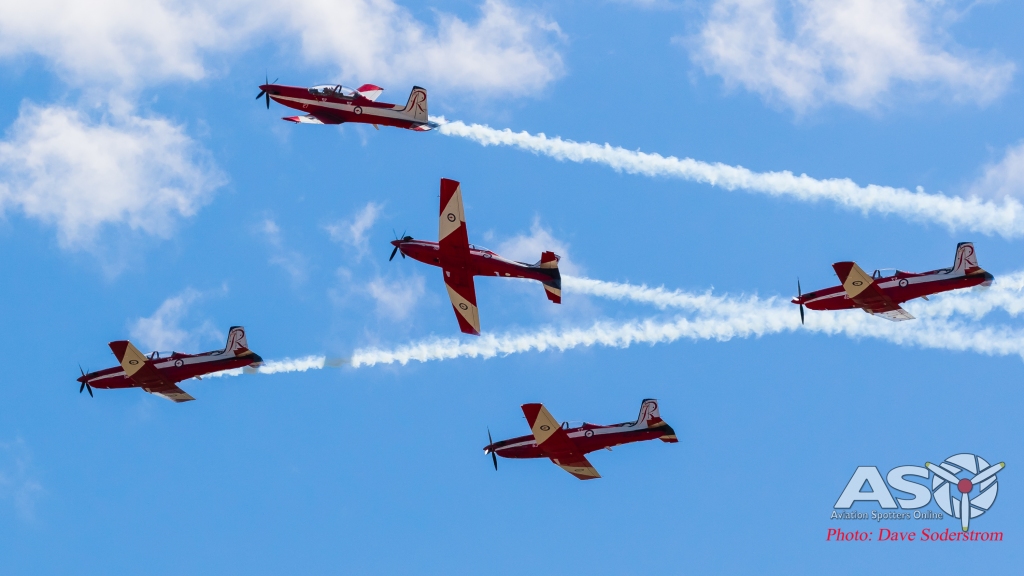
A three ship trainer display was up next, which included Australia’s only Vultee BT-13 Valiant, a Ryan PT-22 and Ryan STM S2.

The BT-13 is based in Albury and owned by John Kempton is registered as VH-JKV.

Ryan STM S2 VH-RSY is part of the vast Temora Aviation Museum collection.

Scott Taberner’s immaculate Ryan PT-22 makes a pass.
A mass launch of the the World War Two aircraft and a couple of Royal Australian Air Force F/A-18As signalled the start of the next display. Two Mustangs, a Commonwealth Aircraft Corporation built CA-18, and the other one a North American P-51D took to the air, in front and behind were a pair of different versions of the Curtiss P-40 Kittyhawk. First up was Doug Hamilton’s P-40N, a genuine combat veteran, and Ross Pay’s ex RNZAF P-40E NZ3094, which is in the scheme of a former 3 Squadron RAAF P-40E Kittyhawk, serial ET953 Sqn, code CV-V, which was the personal aircraft of Robert Henry Maxwell (Bobby) Gibbes, DSO, DFC and Bar, OAM.


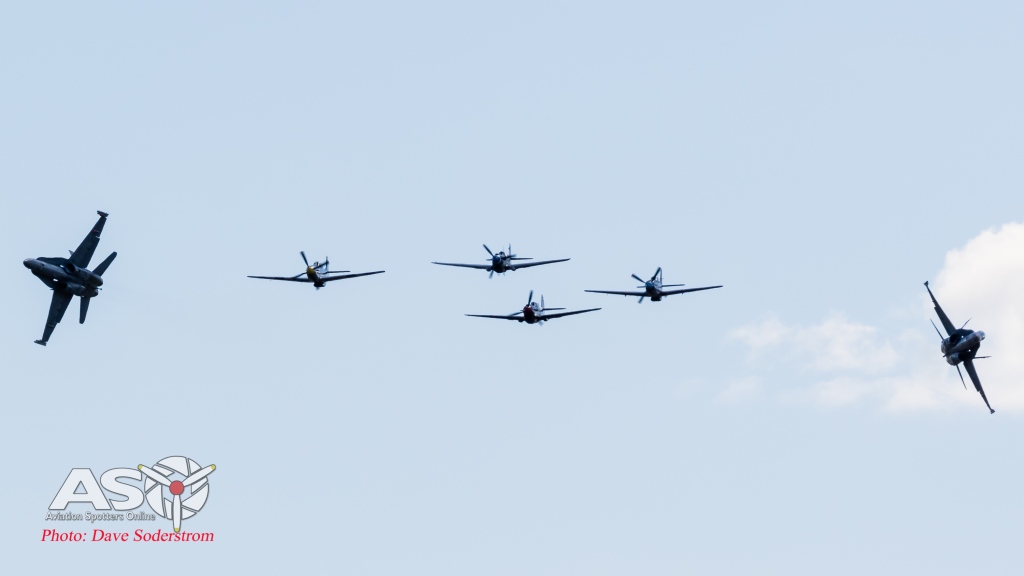

Once the formation display was complete the pair of P-40s did a couple of passes before the Royal Australian Air Force F/A-18A began its solo display.

The warbirds left the display airspace and it was time for some jet fuelled noise brought to you by the Royal Australian Air Force with the McDonnell Douglas (now Boeing) F/A-18A ‘Classic’ Hornet. Another type in its twilight years of service, after over three decades of service to the nation, it will soon be replaced by the Lockheed Martin F-35 Lightning II.

Delivered to the RAAF on the 29/08/86 currently flying in 77 Squadron markings.
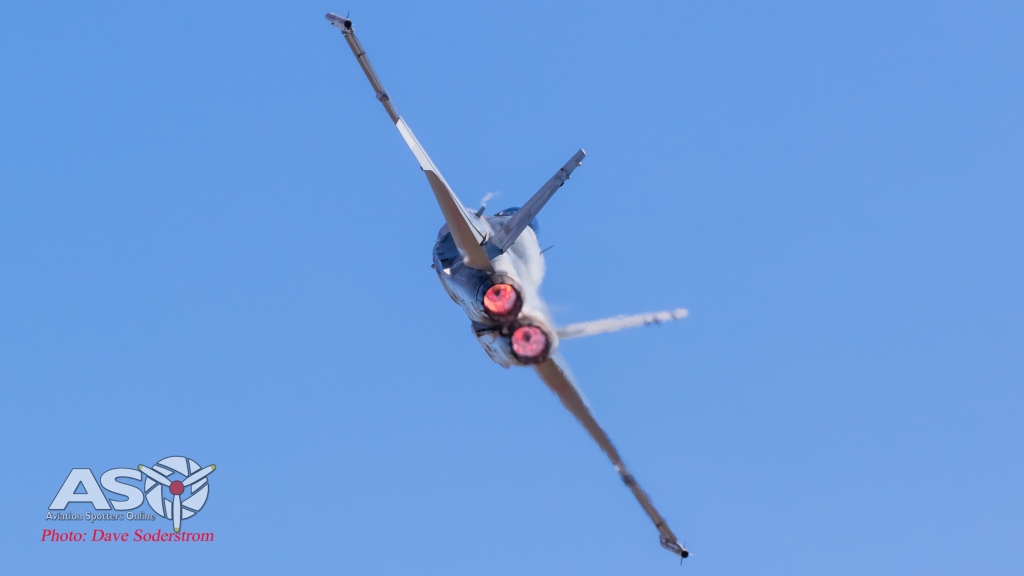
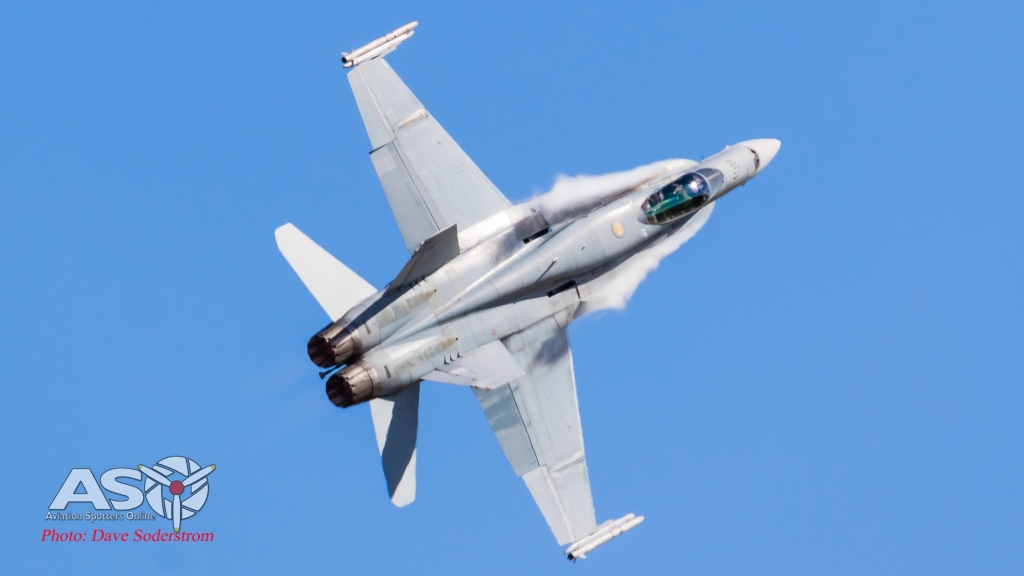
Ecto forming as SQNLDR Phil Eldridge, pulls the Hornet skywards.


The quartet of V-12s returned for some more aerial displays,

American muscle flying in

The P-40N leads the P-40E.

Matt Hall, brings the CAC Mustang in for a fast pass.
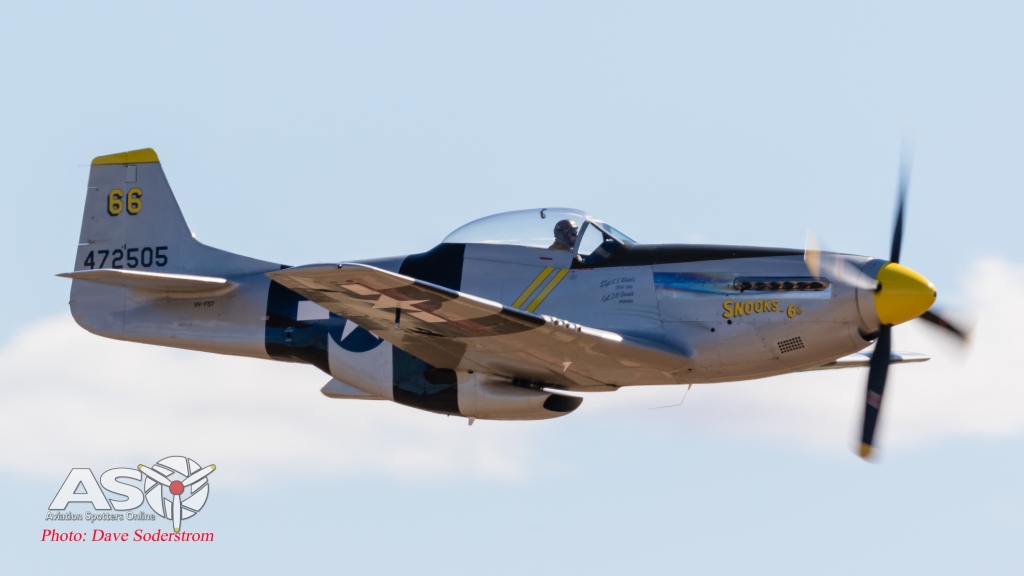
Cameron Rolph-Smith, passes by in the only flying North American P-51 in Australia.

Doug Hamilton brings the P-40N in.

The next to display was a first timer for Warbirds Downunder, a Hawker Hurricane. Flown during the display by Paul Bennet on behalf of the owners, the aircraft flew together with two of its British relatives, being the locally based Supermarine Spitfires owned and operated by the Temora Aviation Museum.


Paul Bennet flew the Hawker Hurricane over the two days.

Guy Bourke giving a wave before launching the Mk XVI. I’d be smiling too!

Scott Taberner, taxies the Mk VIII out for the display.

Painted as the personal mount of Royal Australian Air Force, Wg. Cdr Bobby Gibbes of 80 Wing RAAF, based on Morotai in 1945. The aircraft’s serial number is A58-758 however it is marked as A58-602.

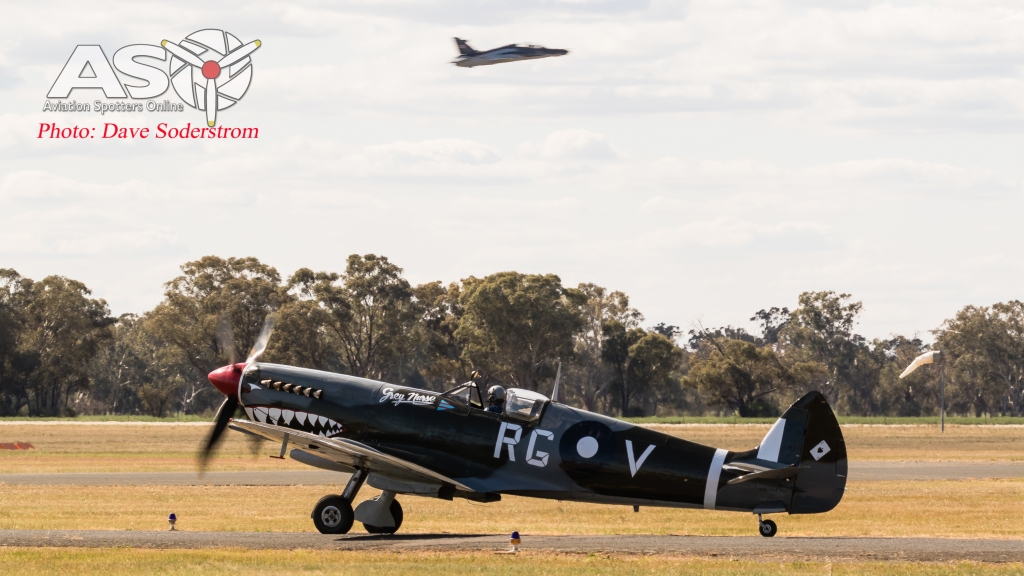
The Hawk departs as the Spitfire taxies out.

The first time two Spitfires and a Hurricane have been displayed together in Australia. What a sight and sound!


The Hawker Hurricane Serial No 5481 C/N 60372, was built in Canada by the Canadian Car and Foundry in 1942 as a Mk. XII/IIB. The aircraft served with various Royal Canadian Air Force Squadrons including Nos, 31 Operational Training Unit (OTU), 1 OTU and No. 9 Bombing & Gunnery School from July 1942 until it was struck off charge in November 1944. The aircraft was rebuilt to fly in the United Kingdom and after a short period there moved to the US and then onto Ontario until sold in 2014 to her current owners at Scone NSW. The aircraft is painted as an Mk 1, V6748 of No 46 Squadron, flown by Battle of Britain pilot, John Dallas Crossman. John originated from the Hunter region not far from Scone.


The RAAF trainer formation was another great formation display that comprised of four CT-4s, a pair of CAC Winjeels and the RAAF museum’s T-6 Harvard. To say the formation display was a very well rehearsed and precise one is an understatement. Well done to the display pilots, your practice and professionalism in the air deserves a round of applause.

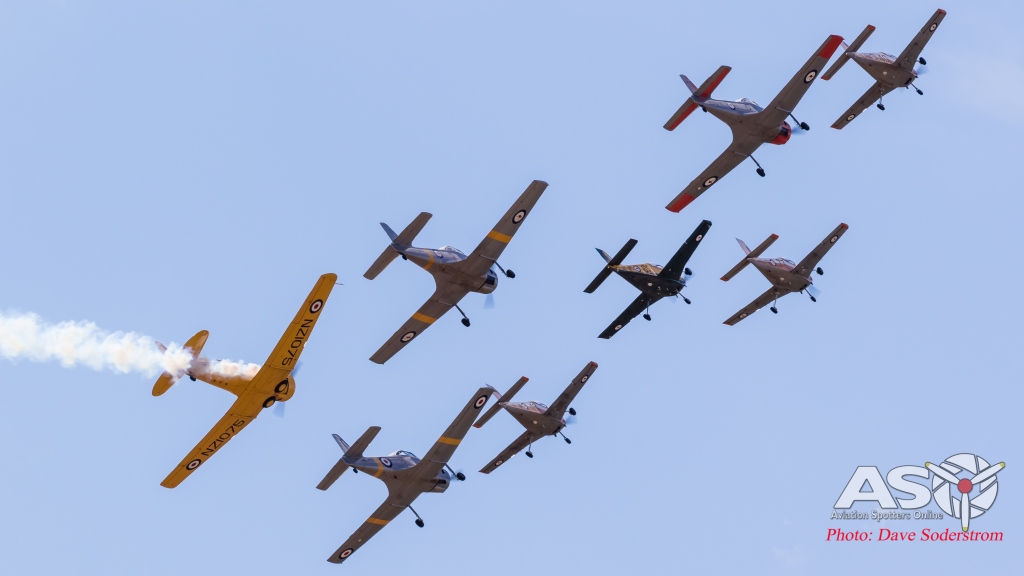
A pair of World War Two aircraft both with very varrying roles were displayed together. Paul Bennet’s big Grumman TBM Avenger and the Temora Aviation Museum’s CAC CA-13 Boomerang did a pairing display followed by some solo displays. Paul’s Avenger, VH-MML is an ex United States Navy Bu 53857 TBM-3E Avenger. It is currently painted in markings of VT.8 that flew from USS Bunker Hill part of CVG-8 (Carrier Air Group 8) commencing March 1944.
The Boomerang, former RAAF serial A46-122, now VH-MHR has been with the Temora Aviation Museum for a number of years now. Rebuilt by Matt Denning some time ago, Matt regularly flies the aircraft showing off its performance and it’s distinctive howl coming from the gun ports in the aircraft wings.

The only flying example in Australia, the Temora Aviation Museum operate VH-MBX, an F.8 version of the Gloster Meteor. In May 1946, former RAF F.3 Meteor EE427 and later RAAF allocation A77-1 was taken on charge by the Royal Australian Air Force, becoming the first RAAF jet fighter. In 1951 Meteors entered regular service with the RAAF and then they did so with a true “baptism of fire”. Meteor F.8 aircraft were taken into action by 77 Squadron RAAF, in Korea, against the Mig-15. This example built by Gloster in 1949 carried RAF serial number VZ467, serving until 1982. Today the aircraft flies carrying the markings of Korean War era Meteor A77-851 operated by RAAF 77 Squadron and flown by Sgt. George Hale.

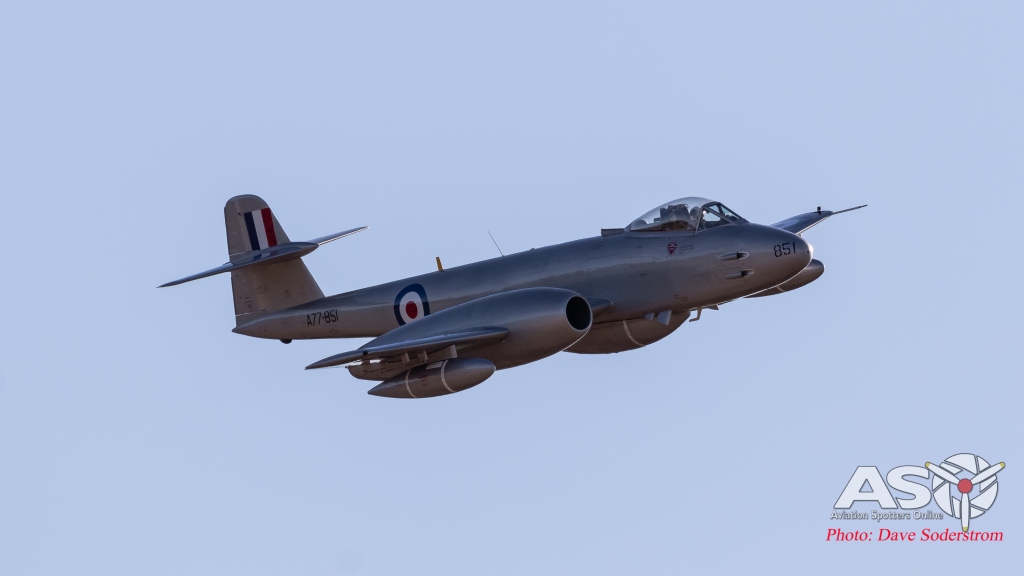
The E-7A Wedgetail dropped in courtesy of its 2 Squadron crew. Based on a Boeing 737-700 platform, its addition of an advanced Multi-Role Electronically Scanned Array (MESA) radar, and 10 crew consoles, gives it the ability to track airborne and maritime targets simultaneously. Based at RAAF Williamtown, it is one of six Boeing’s and was deployed to the Middle East in September 2014, as part of Australia’s contribution to the military coalition against ISIS. Aircraft A30-001 did several passes for the crowd.



The RAAF operate eight of the Boeing C-17A Globemaster III, all based at RAAF Amberley in Queensland with 36 Squadron, the first of which entered service in December 2006. The eighth and last was delivered in November 2015. Aircraft A41-206 was the first airframe delivered being handed over to the RAAF on the 28th January 2006, and also performed the display. Despite its size the C-17 is no slouch, with the crew performing various manoeuvres more akin to an aircraft half its size.

Throttles opened up, and smoke coming out just how we like it.



Yes the aircraft was low!
The Friday show saw a Vietnam era display which included a trio of Cessna O-1 Birddogs, and a very energetic display from the Cessna A-37 Dragonfly.

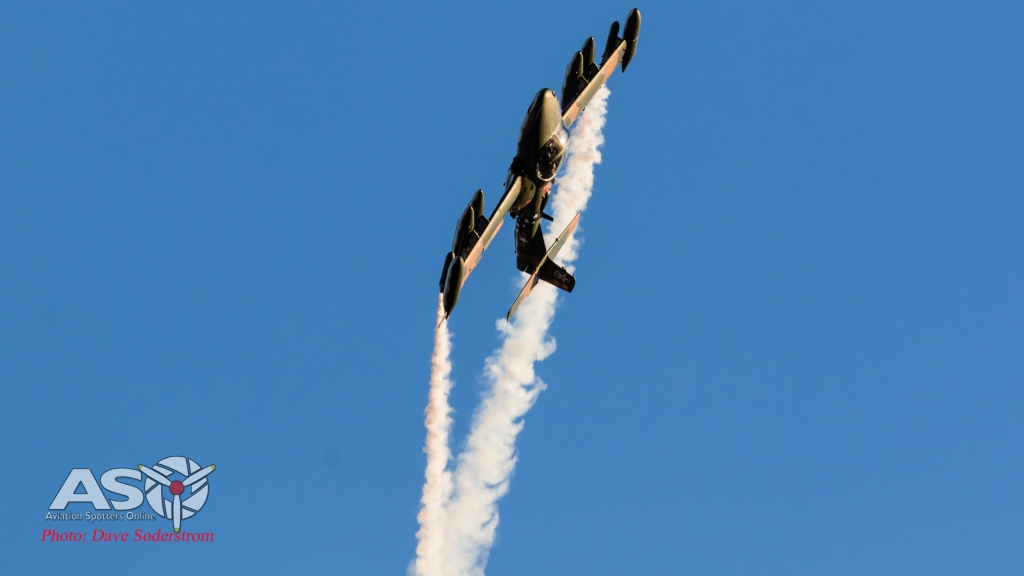



Saturday was a very different day to the previous with overcast weather, although the sun found time to visit later in the day. This of course didn’t stop the action.
The Historical Aircraft Restoration Society based at Albion Park once again supported the show with several of its flying aircraft. This included the Consolidated PBY-5A Catalina VH-PBY and De Havilland DHC-4A Caribou VH-VBB. Both were on static display and flew later in the afternoon. More on this later.


The RAAF put together a huge contribution to the airshow. The ground displays and in the air were welcomed by the crowds and certainly popular with the little and big kids.

Lockheed C-130J Hercules A97-467 is one of twelve in service with 37 Squadron based at RAAF Richmond in NSW.

Both BAe Hawk 127s A27-01 and A27-29 from 76 Squadron at RAAF Base Williamtown NSW.

F/A-18A Hornet A21-9 with its wings in the folded position.

The two low-bypass F404-GE-400 turbofans produce 7,258kg thrust each!
The Roulettes Launch……………





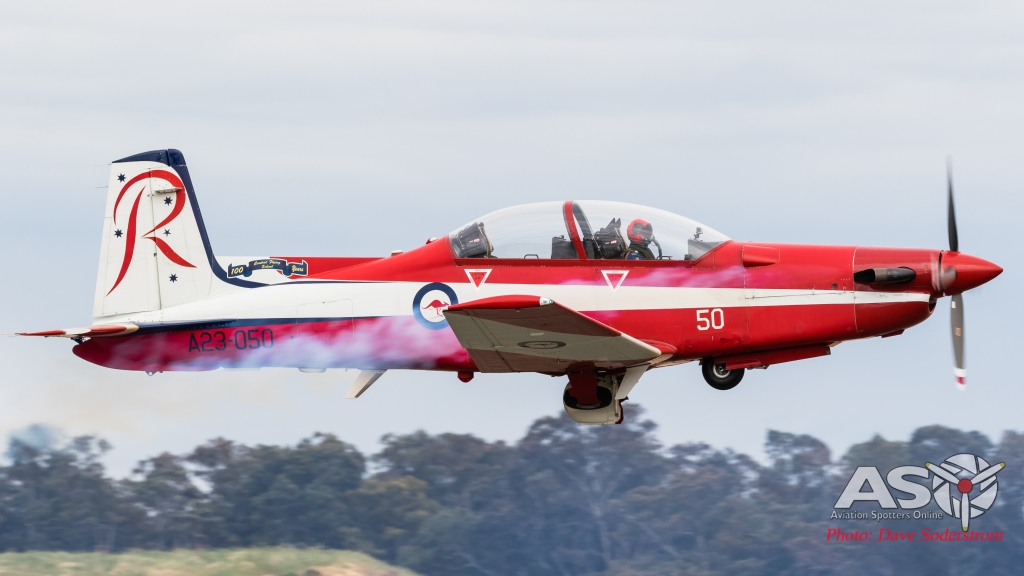
Warbirds taxi out for their display.
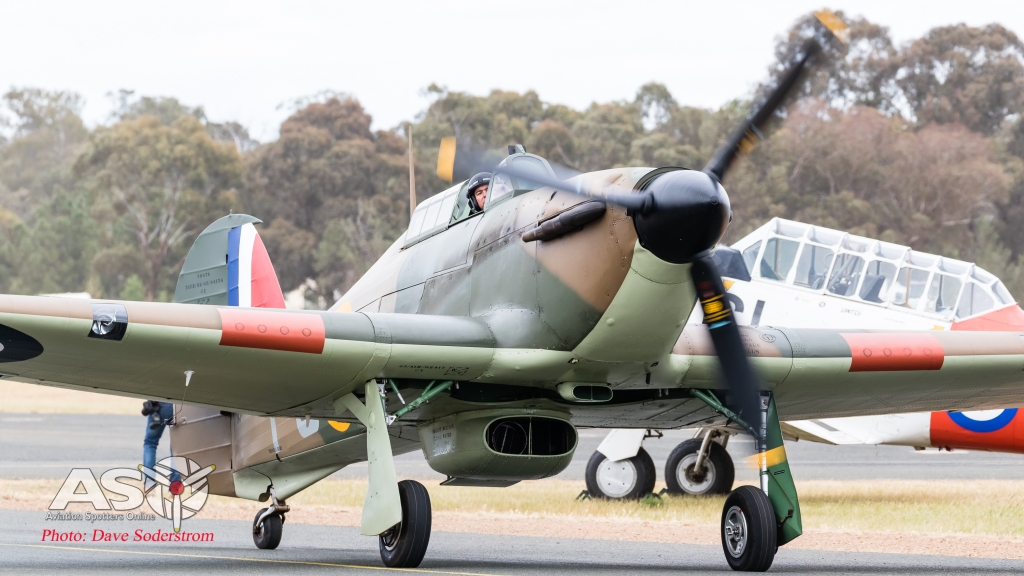
Paul Bennet taxies out in the Hawker Hurricane

Matt Hall, taxies out in ‘Snifter’

There is cool then there is Matt Hall in a Mustang cool!

Doug Hamilton taxies out in his P-40N
Opening the show in perfect formation the RAAF Roulettes.

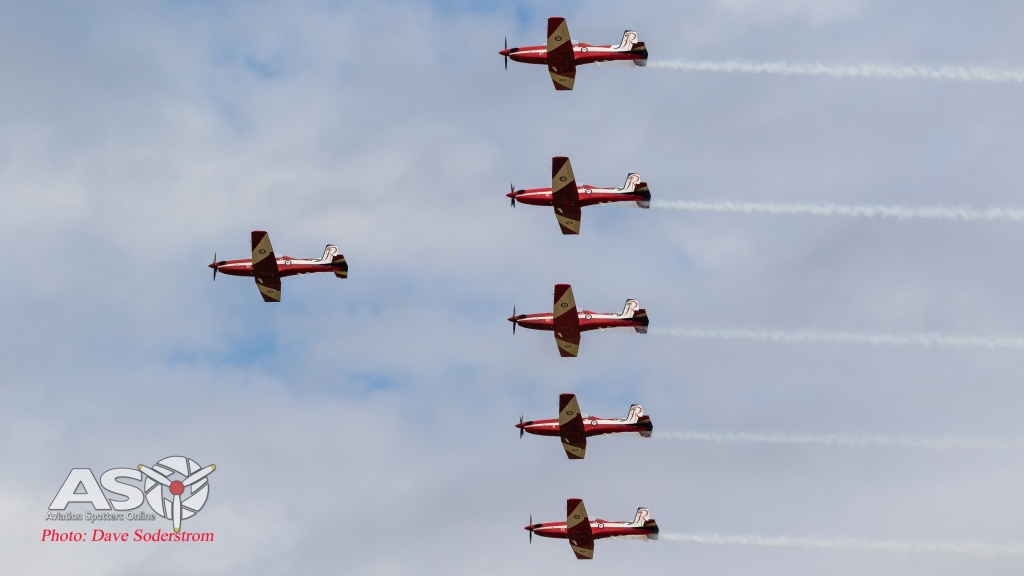


He’s going vertical………………you know the rest.
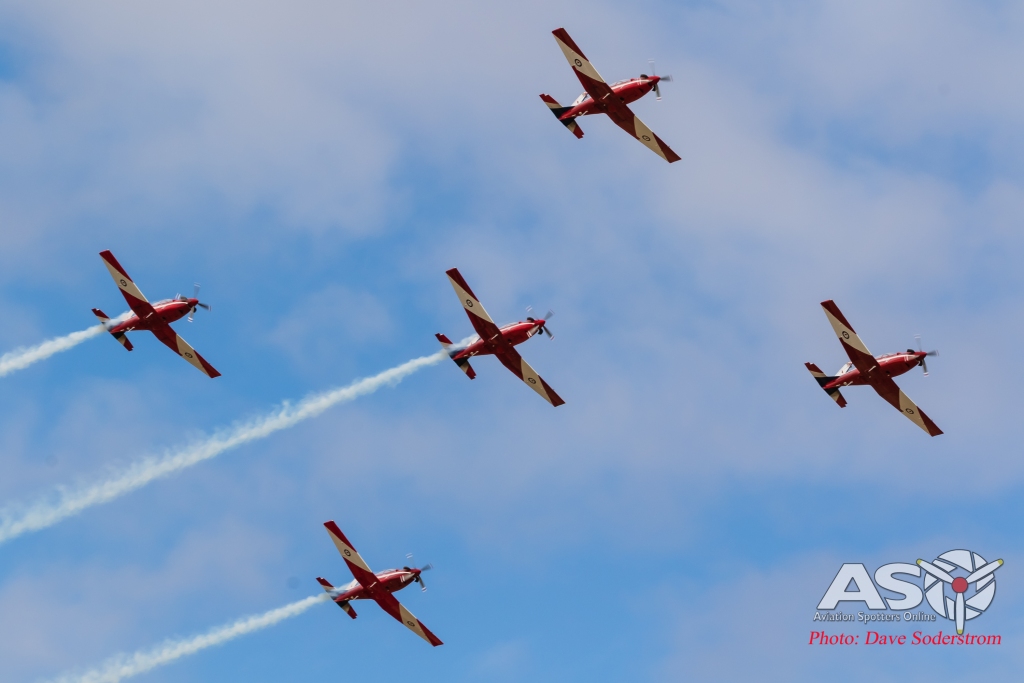
Enter centre stage, a fantastic warbird formation.



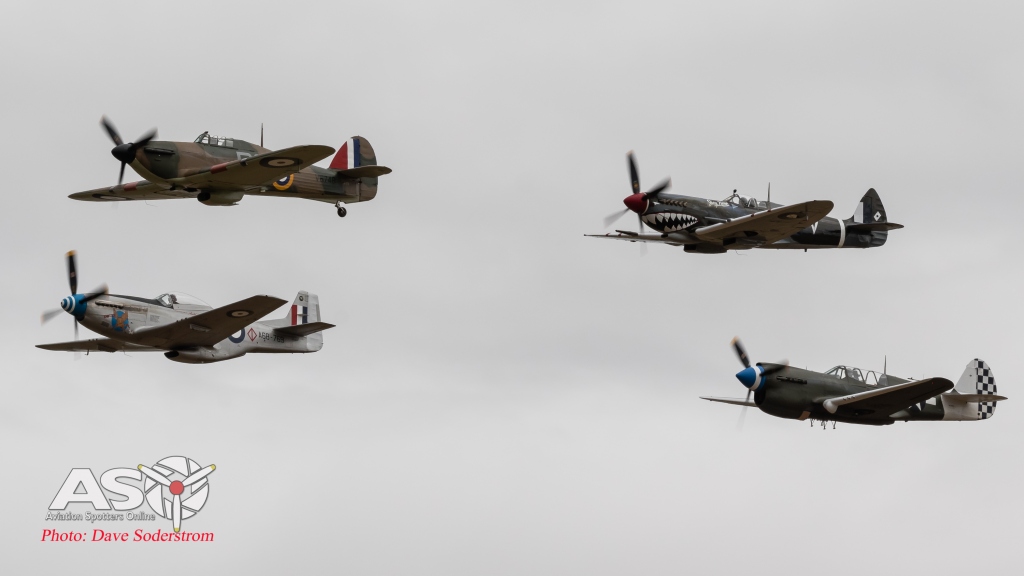

The RAAF trainer flight was again an amazing display, with three NZAI CT-4s, three CAC Winjeels and the RAAF Museum’s T-6 Harvard in tight formation flying.
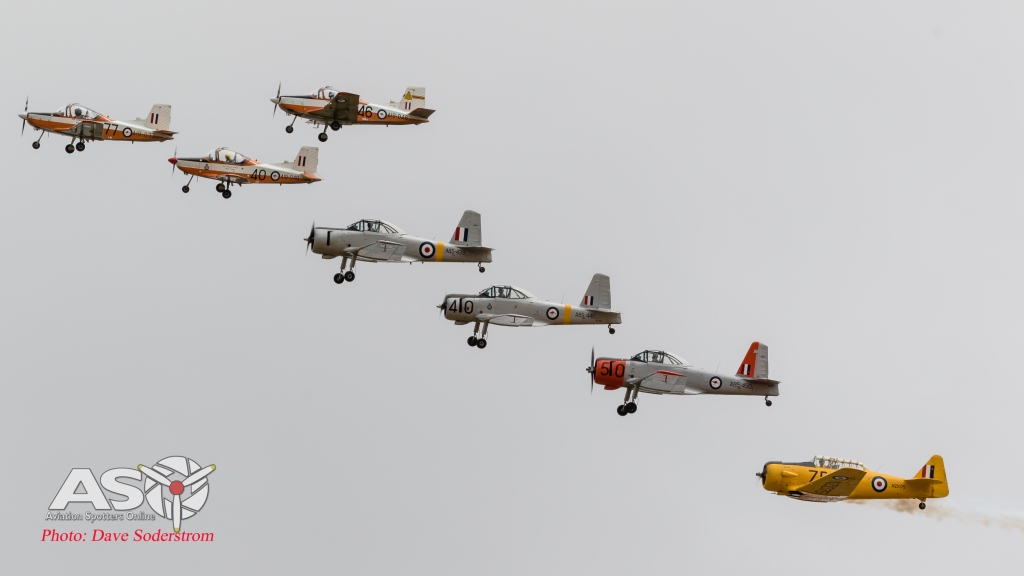
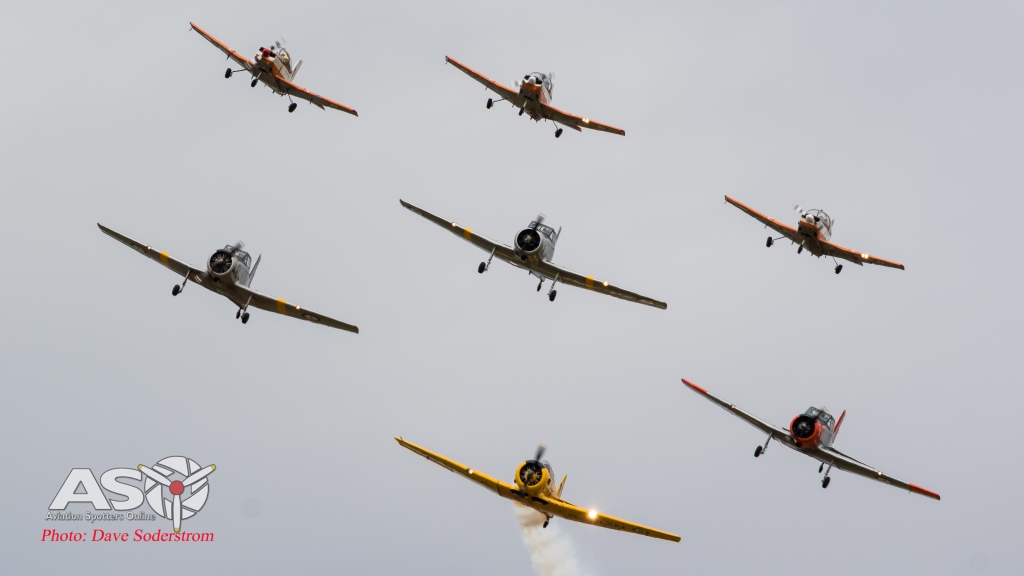
Now that’s a formation that even the Roulettes would be proud of!

Solo performances were done by both the T-6 and CT-4.

VH-HVD ex Royal New Zealand Air Force, Harvard III NZ1075. This aircraft is part of the RAAF Museum Heritage flight.
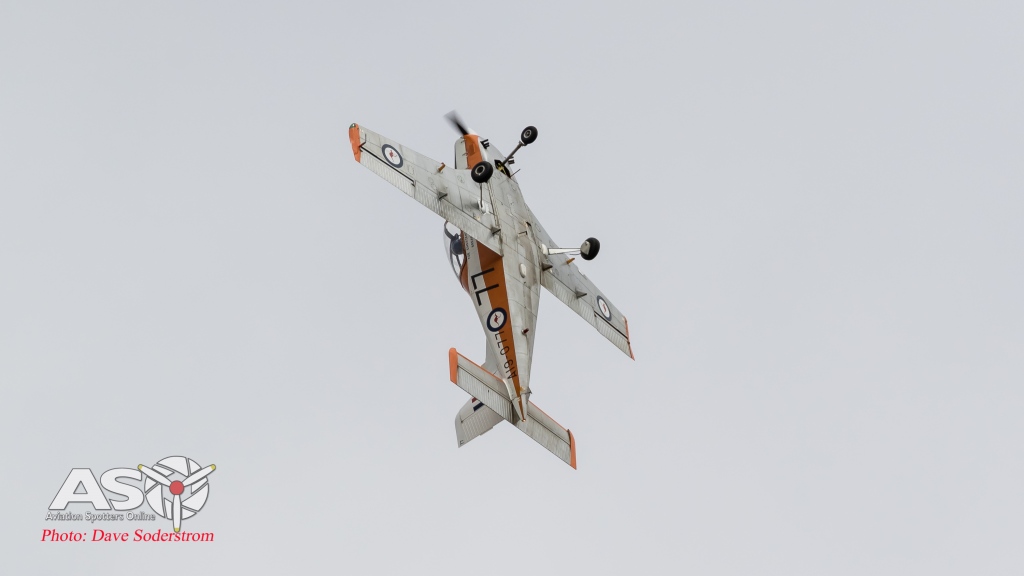
The Southern Knights are a civilian aerobatic display team which fly the North American T-6A Harvard/Texan. The team came together in 1997 and, since then, have performed at various airshows around Australia. The pilots for the team were, Doug Hamilton, Steve Deeth, Guy Bourke and Scott Taberner.



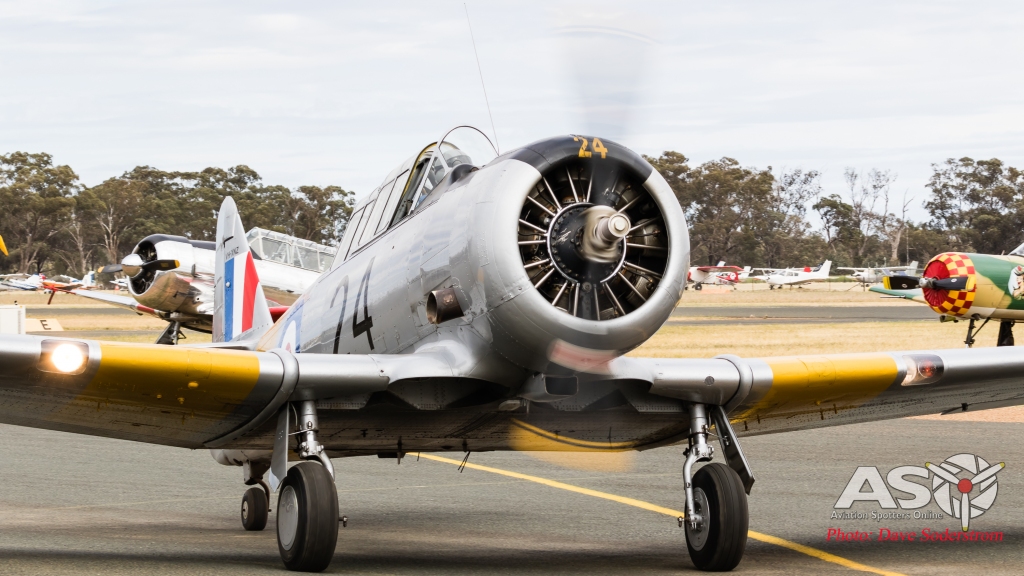

VH-PEM an ex Royal New Zealand Air Force T-6 Harvard owned by David Salter. and flown by Doug Hamilton.

VH-YVI owned and flown by Stephen Deeth. Ex USAF 51-15202, after service with the USAF she moved onto serving with the Italian Air Force as MM53652.

VH-XSA is an ex South African Air Force 7667 SNJ-4. This beautiful aircraft is owned by Judy Pay.

Doug Hamilton’s own T-6 is another ex RNZAF NZ1024.



Next to display were two Australian built aircraft. The Commonwealth Aircraft Company (CAC) CA-16 Wirraway VH-BFF and CA-13 Boomerang VH-XHR.

VH-BFF was the first ex-military aircraft permitted to fly on the Civil Aircraft Register. Commonwealth Aircraft Corporation (CAC) manufactured the Wirraway at Fisherman’s Bend in Victoria. The aircraft was an Australian development of the North American Aviation NA-16-1A and NA-16-2K aircraft. It is powered by Australian manufactured versions of the Pratt & Whitney R1340 Wasp engine. CAC built a total of 755 Wirraways from 1939 to 1946. VH-BFF was built in 1944, its RAAF history was brief though.



Two Australian designed and built aircraft in the air together.

Martime Patrol was the theme for the next lot of aircraft to display. This saw HARS’s afore mentioned Catalina launch alongside the Temora based Lockheed Hudson and Paul Bennet’s Grumman TBM Avenger.


Low and slow exactly how the type was operated in service.

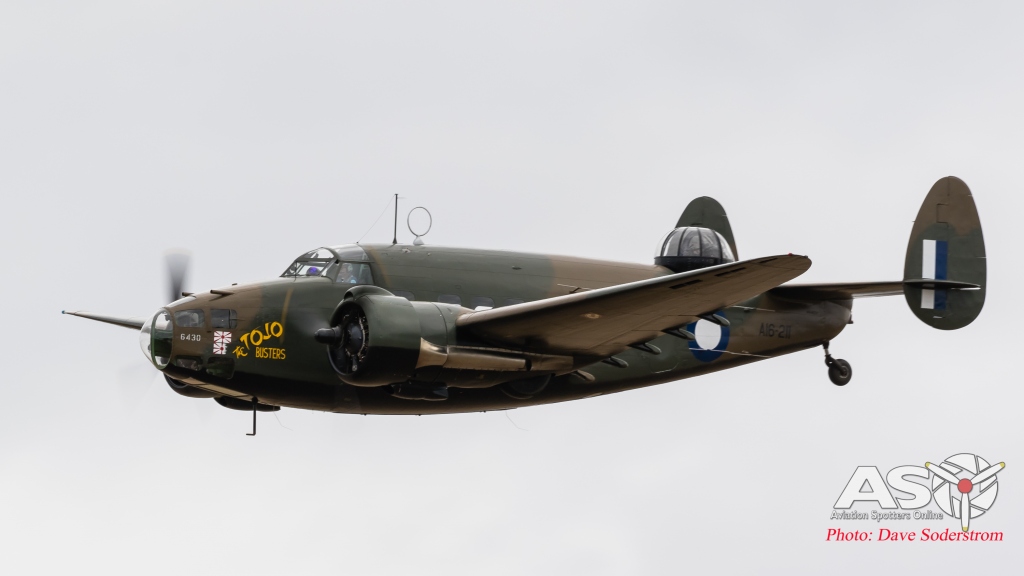
VH-KOY ex Royal Australian Air Force A16-112 Mk.III Hudson. One of two Hudson restored by the Long family and today the ONLY FLYING Hudson in the world. Painted as A16-211 ‘Tojo Busters’.

Bomb bay doors open pass

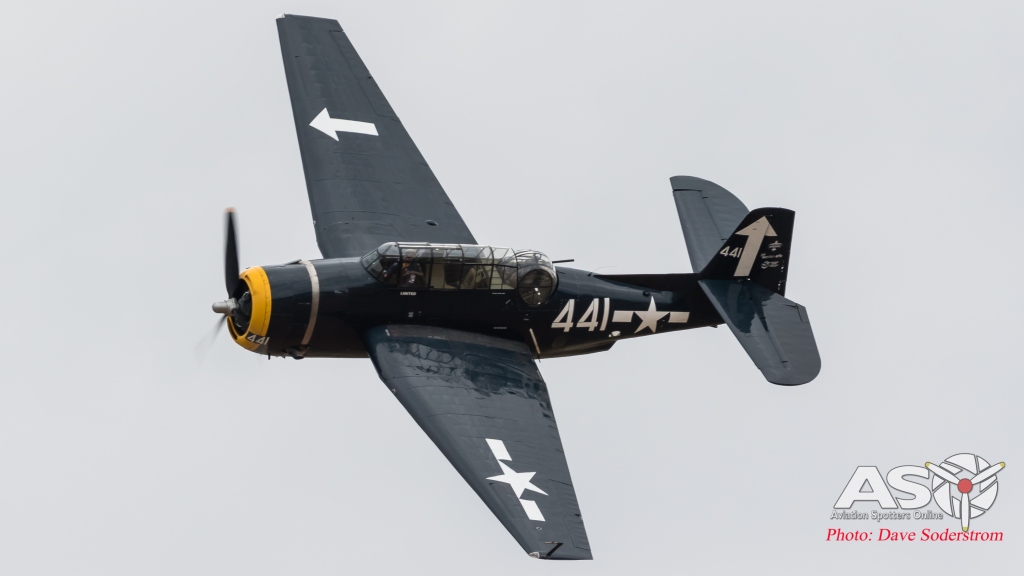

Paul Bennet’s Grumman Avenger never fails to impress with its shear size and sound.
The World War Two fighter launch certainly had the crowds attention. With four V-12s in sync it was hard to miss.

Paul Benett launches in the Vintage Fighter Restorations P-40E.

The Flying Undertaker launches and tucks up its gear.

Black and White retouch


Now that’s some V-12 horsepower.
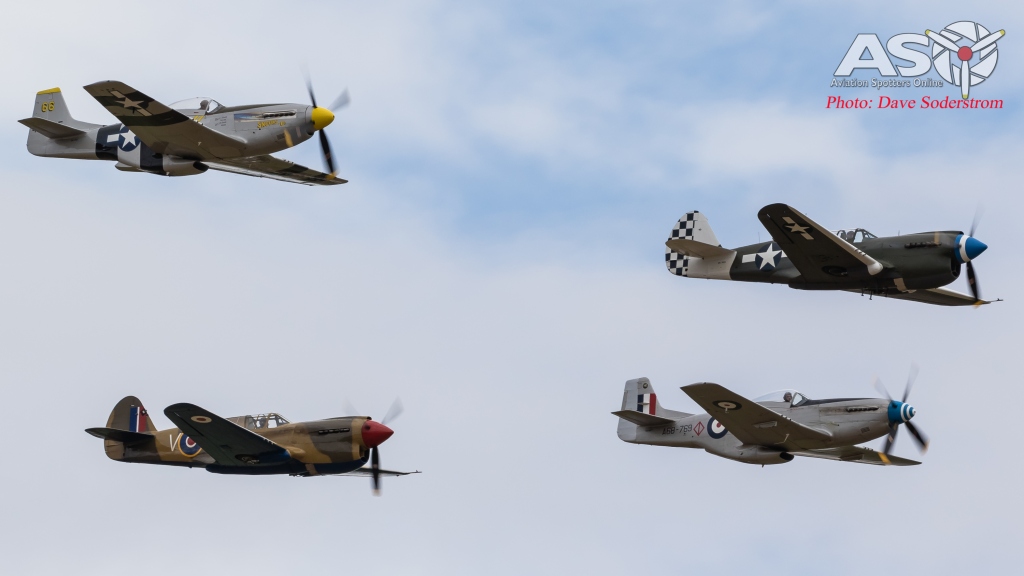
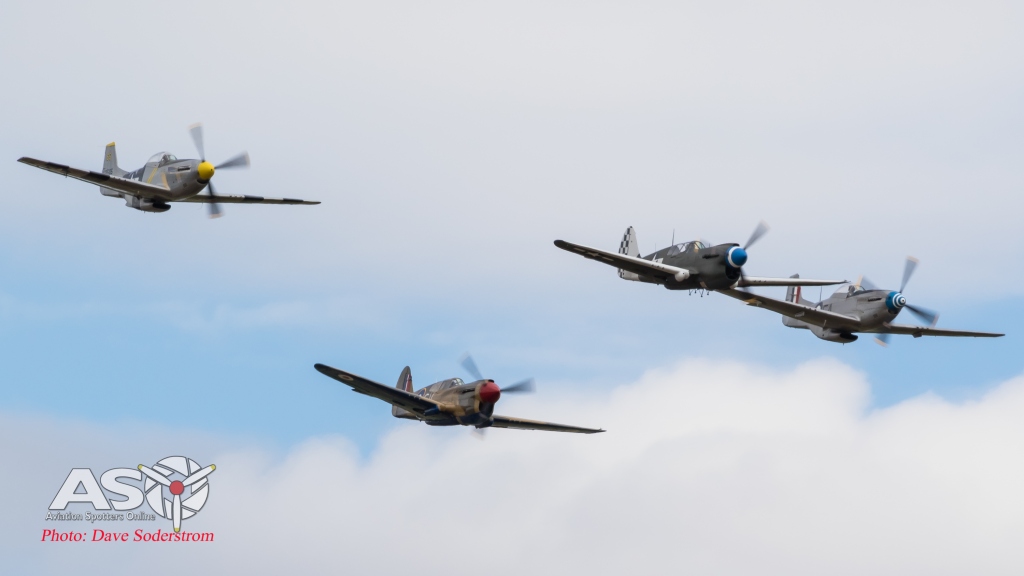



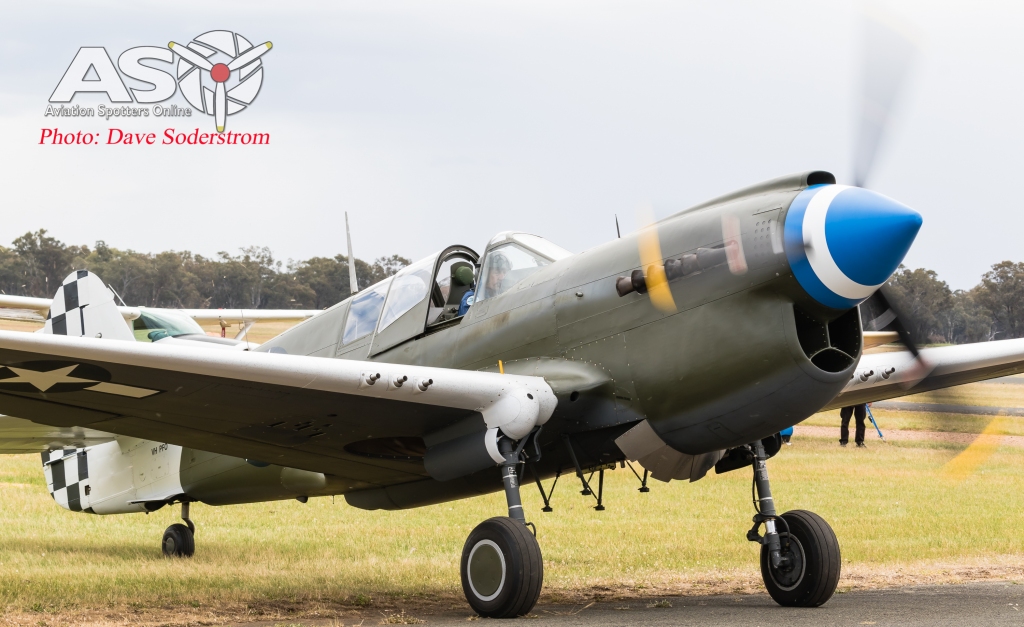
Painted in its original, 8th Fighter Squadron, USAAF 49th Fighter Group, like it was when this aircraft on February 14, 1944 was shot down over Papua New Guinea.


The Vietnam Era display saw the launch of the HARS Caribou along with a fleet of Birddogs, T-28 Trojans ,Cessna 0-2 Skymaster and the A-37 Dragonfly.

Delivered to RAAF in 1965, it served with 35 Squadron in Vietnam.

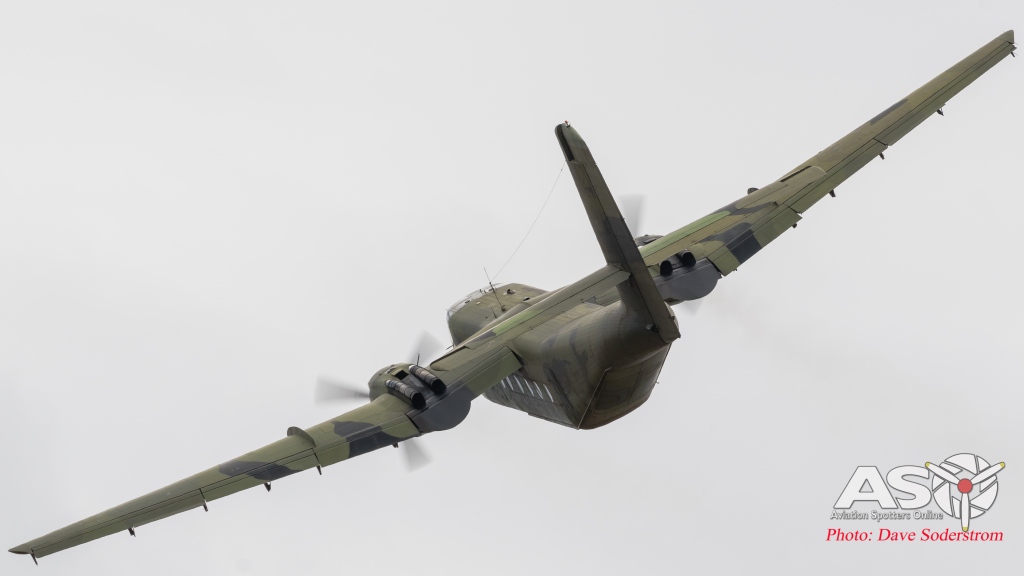
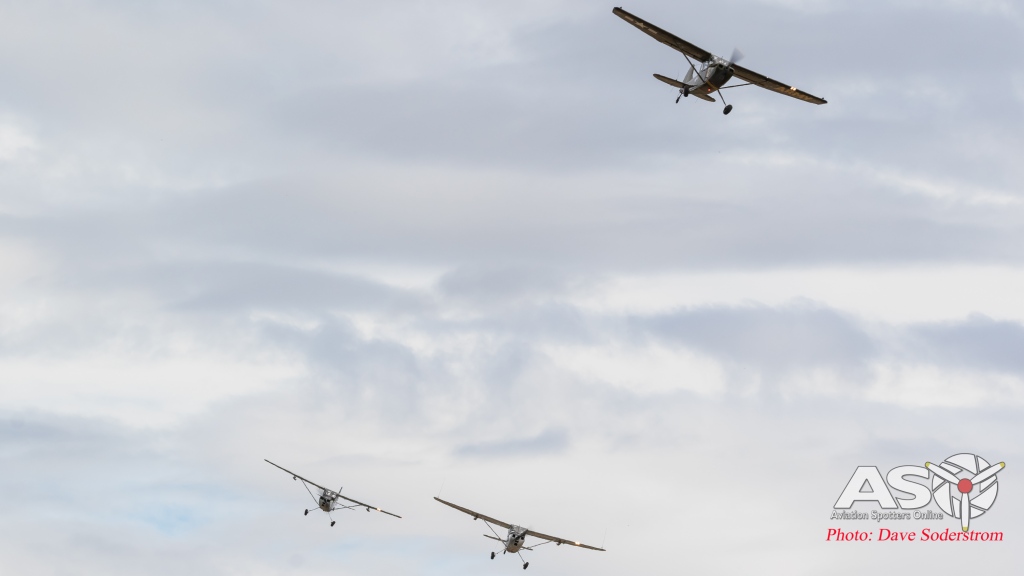
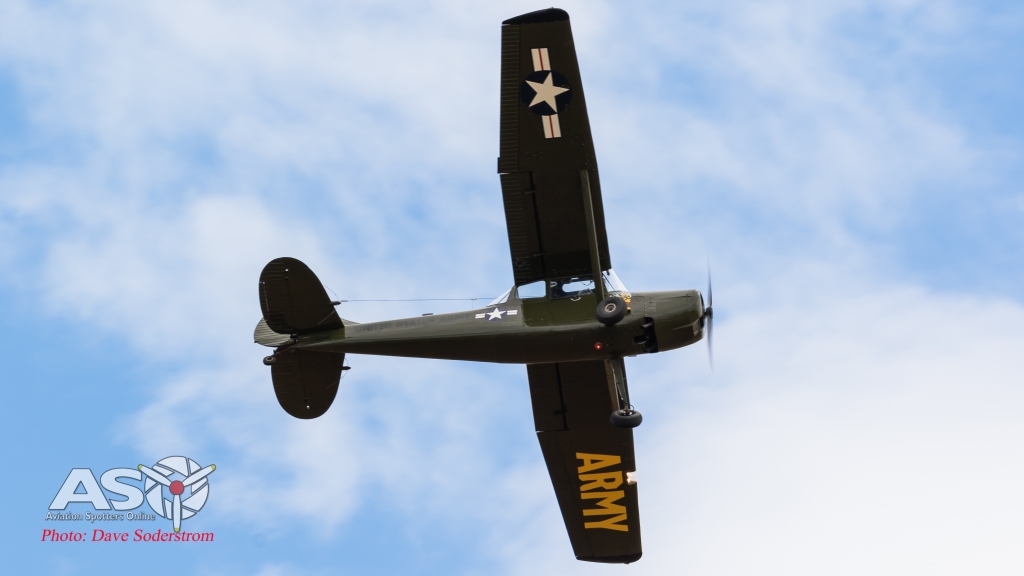
Mark Binskin flew his Birddog in the Vietnam feature.

Flightpath magazine Editor and all round good guy, Rob Fox brought his Birddog to the show.

Matt Henderson’s beautiful VH-FAC was the third Birddog in the display.


VH-ZUC ex United States Air Force 51-7576 T-28D Trojan. This beautiful Trojan is one of two in the Lynette Zuccoli collection based in Toowoomba QLD

Temora Aviation museum’s O-2 Skymaster is flown in a scheme as operated by an RAAF Pilot during Vietnam. Australian Forward Air Control pilot David Robson. As Jade 07, Flying Officer David Robson flew over 240 missions in the O-2A and controlled over 80 air strikes in support of the Australian troop



VH-XVA is the second A-37 in flyable condition with the TAM. The aircraft underwent a major overhaul and flew again in May of this year. The aircraft was flown by Darren Crabb.
The second World War Two formation again consisted of the pair of Temora based Supermarine Spitfires, and the Hawker Hurricane from Scone. The Hawker Hurricane developed oil pressure issues and landed. The two Spitfires then put on a graceful display.

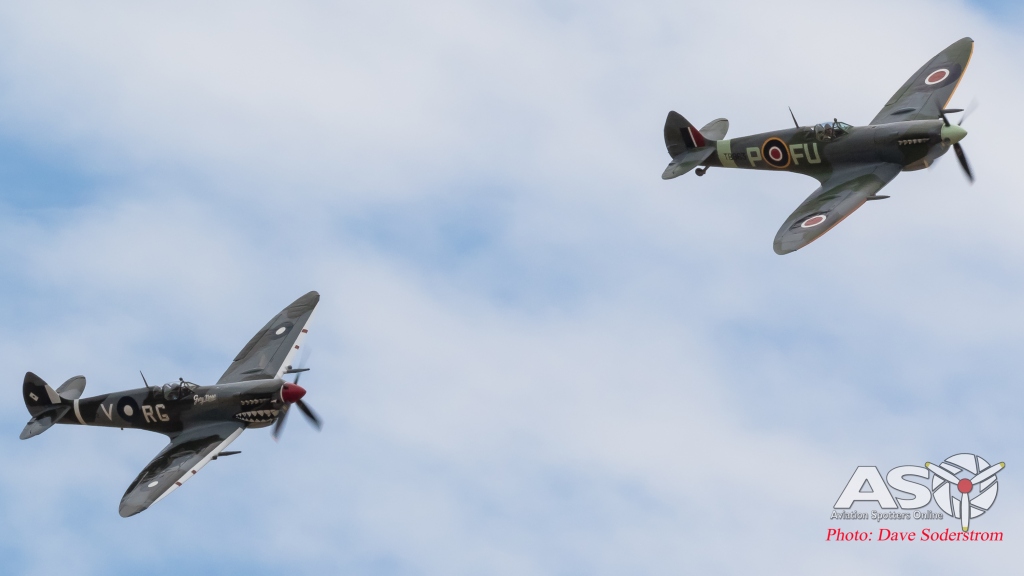
The fastest radial on the airfield launched for its display. This record breaking aircraft known as ‘Steadfast’ is a Yak-3 , which holds nine world records to its name, that include the international world speed record set in 2011 by reaching 655km/h over a 3km course in Utah. Flown by James Crockett, the aircraft is fitted with the best smoke generators on the airshow circuit, as the aircraft preforms its smoke makes rings which adds to the display.
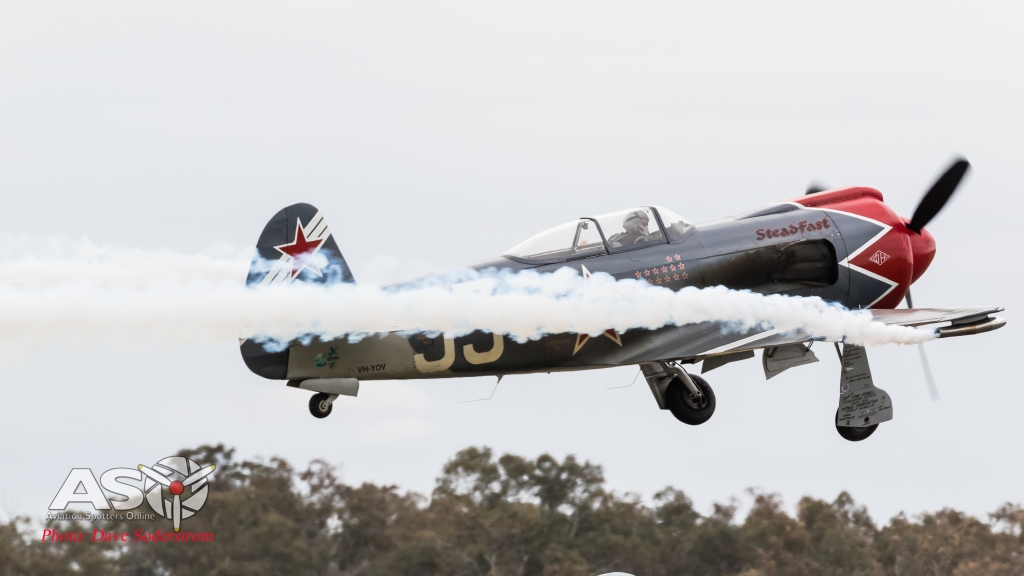



The Hawk 127 Demonstration was conducted by A27-29. The Air Force’s Lead in Fighter prepares qualified Air Force pilots for conversion to F/A-18A Hornet, F/A-18F Super Hornet and EA/18G Growler aircraft. The BAE Hawk 127 first entered service to replace the CAC built MB-326H ‘Macchi’ in 2001. Thirty three Hawk 127s were ordered, twelve of which were produced in the UK and 21 in Australia. The Hawk is flown and based at two seperate locations in Australia, No 76 Squadron based at RAAF Base Williamtown near Newcastle, and No 79 Squadron at RAAF Base Pearce, near Perth.




The RAAF again flew the Boeing C-17A Globemaster III down from RAAF Amberley. The aircraft A41-213 preformed the display.

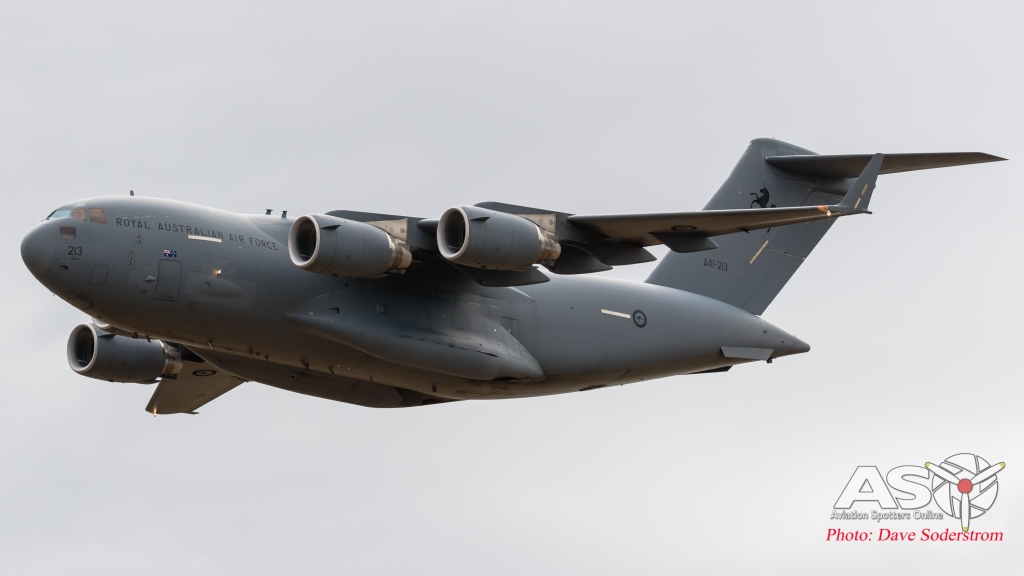


The next launch was the final one for the World War Two fighters. This time it was two Spitfires, two Kittyhawks and two Mustangs.








This is why we come to Warbirds Downunder to see displays like this.


The tail chase preformed by these aircraft was absolutely fantastic.



Darren Crabb taxies the Gloster Meteor out for its display.


Hornet launch!
The RAAF brought two F/A-18A aircraft to Warbirds this year. Some seventy five F/A-18A and two seat B models were ordered, with deliveries commencing in 1985. Now after thirty three years of service of the type, the fleet, and its operational squadrons, have begun the wind down for the transition to the Lockheed Martin F-35 Lighting II. No. 3 Squadron has withdrawn the type from service leaving No 77, 75 and 2OCU continuing to fly them until sufficient numbers of F-35s are in the country. A21-09 preformed the display this year again with SQNLDR Phil Eldridge at the controls.




A fantastic dual pass by the Meteor and Hornet was a real treat for the crowd.


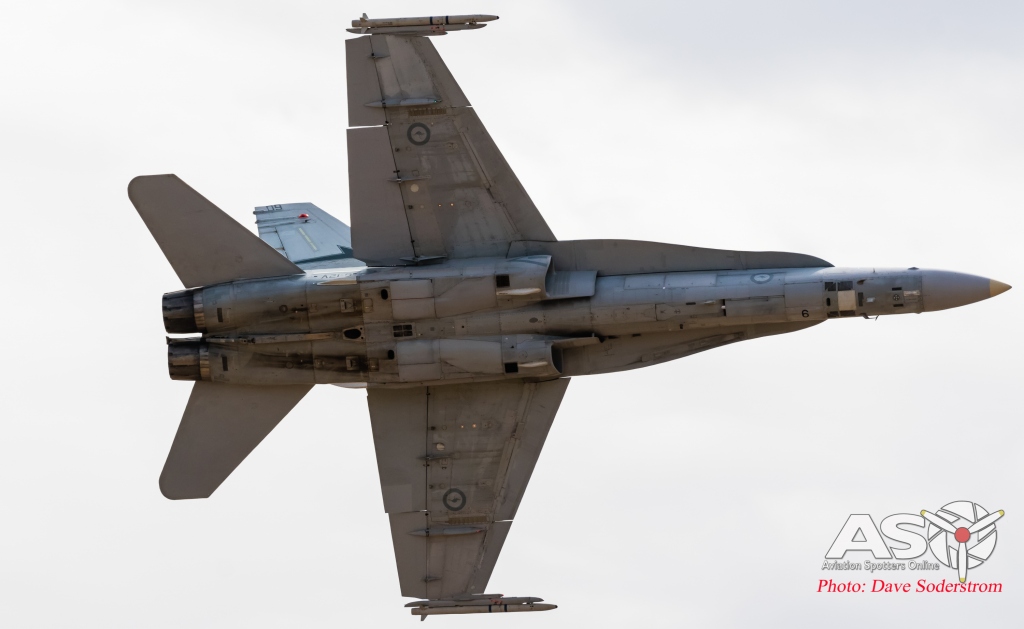
To the Warbirds Downunder organisers, the volunteers and people of Temora you are all to be commended for putting on another great airshow. The hospitality in the town, the displays, were fantastic and I know I’ll be back again for the next one. See you then.
Dave




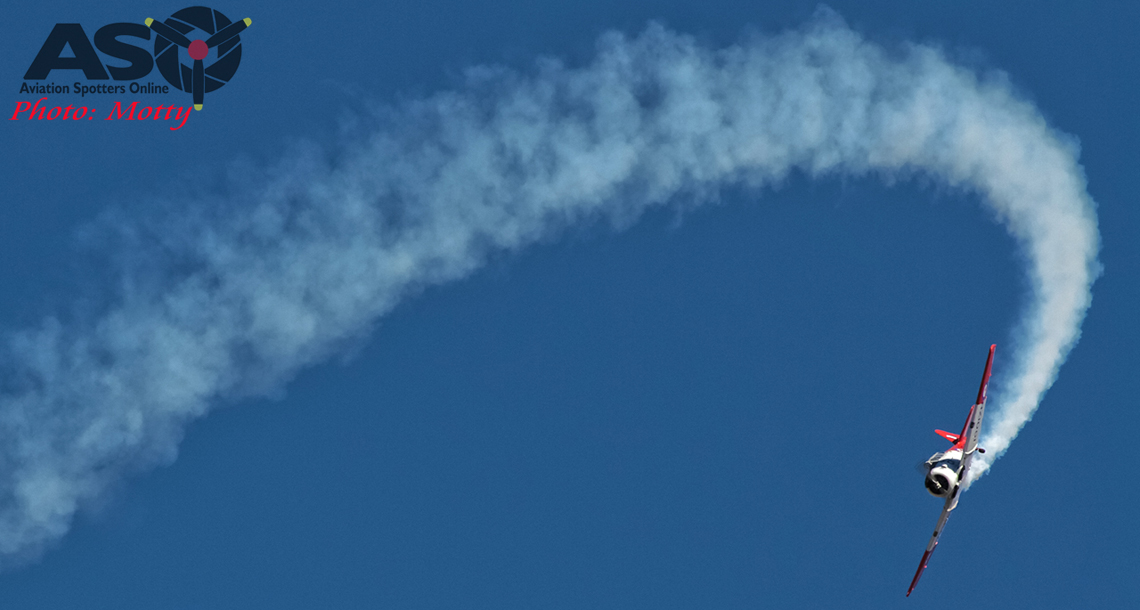

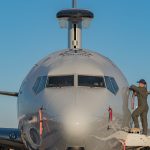



Another good show put on at Temora. I personally think the previous one was slightly better.
The RAAF had more aircraft attending. On Sunday the Wedgetail never evenuated and as Dave mentioned the weather was overcast. The sun did eventually come out when it was all over. Arrivals on Thursday was sparse. Departures on Sunday, the two FA-18A’s, the Hawks, Catalina,some Harvards,Yak-18’s,Nanchang’s.Mustangs and others, made a pretty busy morning. Weather was good also. Countdown now on for the next one. Thanks must go to Paul Bennet,David Lowry and everyone else from the cleaners to the engineers who made the airshow a success.
A great posting from a dual citizen Aussie in the U.K.
A great posting from a dual citizen Aussie in the U.K.